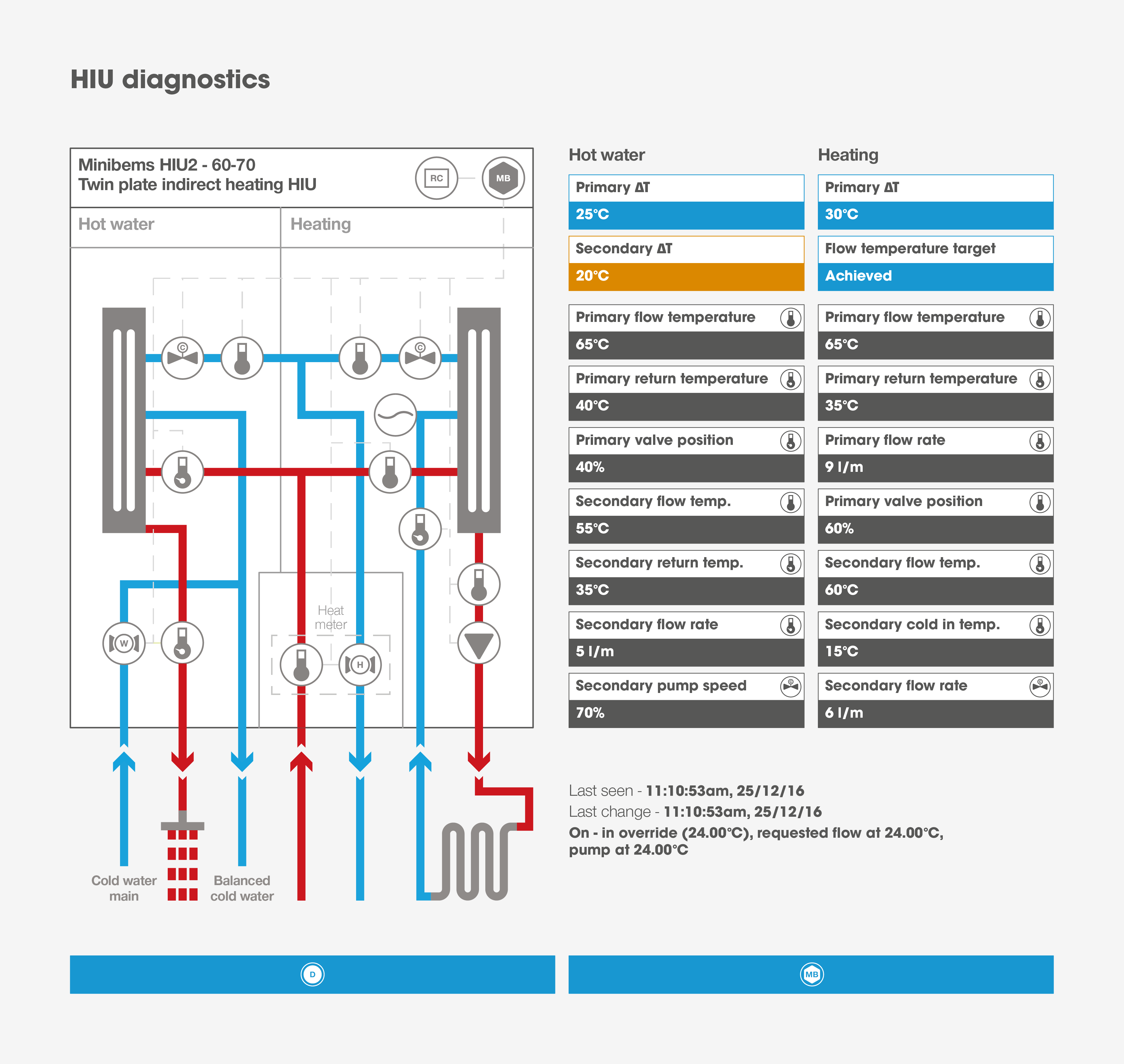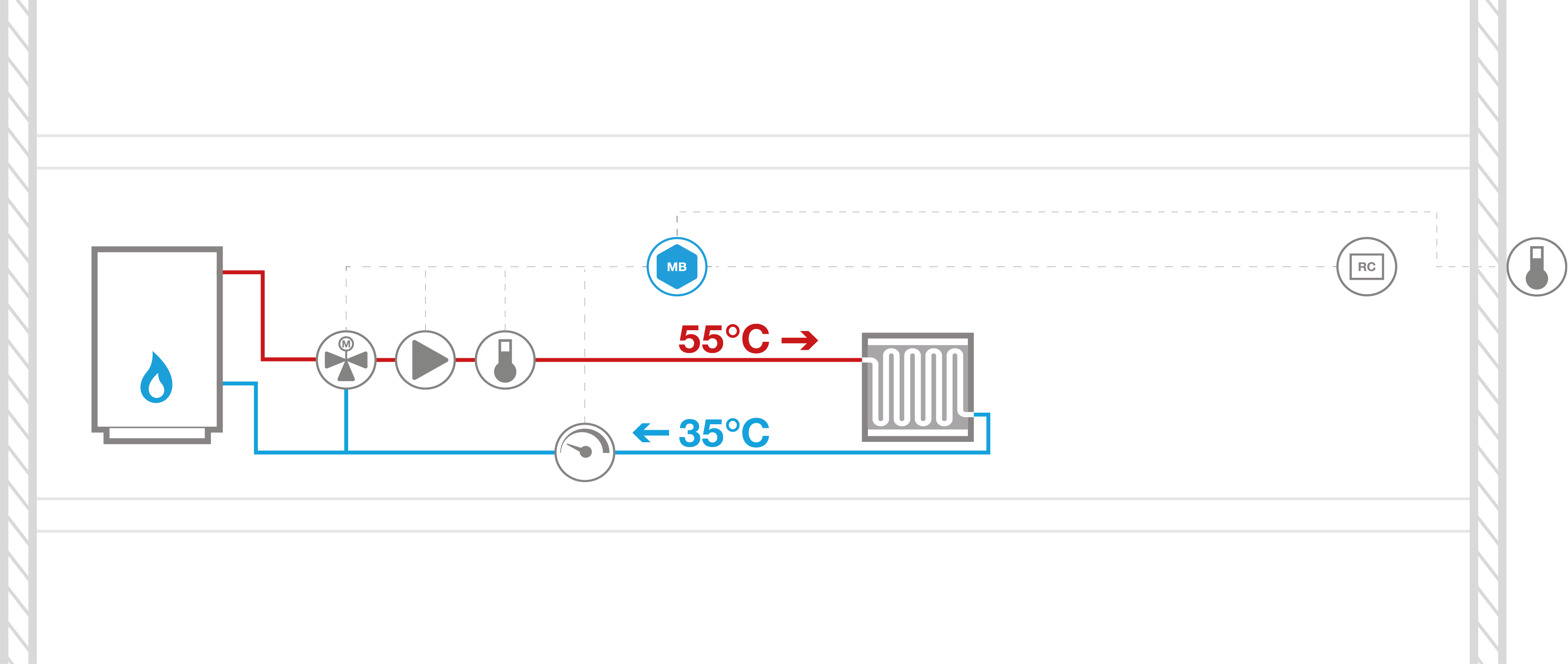Delta T – let’s be having you, Or: Optimisation – What is a constantly optimisable heat network?
We have walked into so many plant rooms. We have assessed hotels, energy centres serving hundreds of homes, leisure centres, farms and office buildings. And they almost all suffer from the same problem; they are running a temperature.
Well, to be clear, their systems are running at a very small temperature difference between the flow (outgoing water) and the return (water going back to the boiler). The difference between flow and return is also known as, ‘Delta T’.
A 5 degree increase in the Delta T is equivalent to reducing the heating bill by 7%. On many heating networks that 7% is equivalent to tens of thousands of pounds. Aggregated across all inefficient heat networks the energy, carbon and monetary savings are enormous.
The way to increase the Delta T is to optimise the way the system performs. This can only be done with software that is able to automatically respond to small changes in the demand for heat.
How can we deliver an optimised heating system?
The software should control all the pumps and valves within a heating network. By placing sensors on the pipework and using IoT (Internet of Things) components the system is constantly monitoring the demand from network users, dynamically varying the heat source temperature output as well as varying the flow, typically slowing down the speed of travel through the network, enabling more heat dissipation.
The software dynamically controls and constantly optimises how heat is generated and distributed. Allied with this there is on-site, real-time, optimisation and constant monitoring. This serves as a diagnostic tool with a dashboard allowing operators to interrogate the way the system is working, why and determine improvements.
All of this helps us to reach our goal of resolving the problem of wasteful constant temperature and constant flow practices. This results in more effective control, reducing the amount of energy required to deliver the right amount of heat and hot water to all residents. Savings delivered range from between 17% – 65% (based on tests completed with UK Government department BEIS – White paper).
Do you know at what efficiency your boiler converts fuel into energy and, in turn, the efficiency of your heating system as a whole?


Latest news
Minibems delivers equivalent carbon savings to converting a petrol car to an electric car, for twenty times less capital cost
Reducing our carbon footprint is typically an expensive task requiring extensive capital investment. However installing Minibems onto a heat network typically saves 1 tonne of carbon, per annum, for every apartment it’s fitted into.
Minibems can reduce residents heat tariffs by as much as 22 pence per kWh
With gas prices soaring the opportunity for real and tangible cost savings on heat networks has never been greater.
Cut the carbon in your heat network today
Minibems can cut an average of 1 tonne of carbon emissions per home per annum – saving you money too. By controlling each apartment with our unique and patented Dynamic flow control system we achieve the savings by optimising flow rates through your HIU.
Cut your heat network costs with Minibems
As finance managers across the UK know, managing budgets is a weekly challenge during these unprecedented times for energy price hikes. This isn’t just bad news for those in charge of managing operational budgets for heat networks, it’s also bad news for families.
Interested in finding out how we can optimise your heat network?



